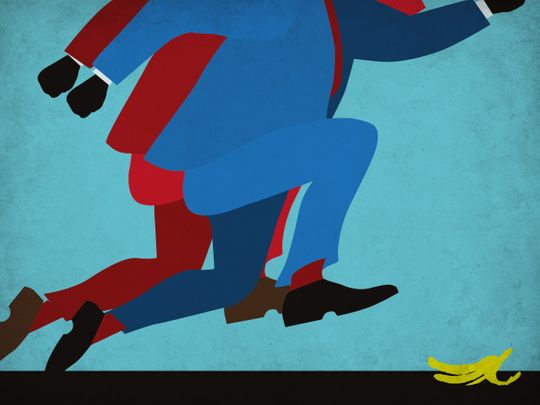
Is there anything short of a major external shock — or a polling meltdown — that could knock Boris Johnson’s Conservatives off course for a comfortable UK parliamentary majority on December 12?
On the face of it, an upset seems unlikely. The Tories are leading by about 10 points in national polls on average. When Johnson warns that the vote is going to be “very, very tight” and that it will “go to the wire,” he’s trying to make sure Conservative voters and Brexit supporters don’t get complacent.
And yet there’s a significant range in the polls, with some showing as little as a six-point lead over the opposition Labour Party (which would bring us into hung-parliament territory) and others as much as 15 points (getting closer to a Tory landslide).
There are also plenty of seats that could be decided by vote swings of only 5 per cent. It wouldn’t take a voter tsunami to capsize the Tories; a strong undercurrent that isn’t visible from the surface could do it.
Traditional party loyalties count, but they aren’t absolute. About one in three voters switched their support between the 2015 and 2017 elections. And plenty of voters make up their minds late in the day. What political scientists call “voter hesitancy” has been growing, making it more likely that the final days matter.
That’s where the ground war comes into play. For all the focus on Facebook advertising, TV debates and social media campaigns, UK elections are still fought largely by party activists who knock on doors, hand out leaflets and engage voters face-to-face or over the phone.
These aren’t just feel-good efforts for local militants; they’re pretty sophisticated operations. Party “agents” (similar to US campaign managers) match information on declared support with key demographic and lifestyle indicators to determine which homes and streets to target, and then coordinate the activists’ work. The aim isn’t to change minds but to mobilise supporters and capture some waverers too.
In fact, traditional campaigning has proved more effective than either mail campaigns or online advertising, In the last election, if Labour had done no real campaigning on the ground, they would have had 27 fewer seats.
Instead, it closed a massive polling gap and made its strongest gains in the postwar era, denying the Tories a majority. In effect, the national UK campaign is almost subservient to the local campaign.
Labour’s competitive advantage
In their recent book on British party membership, Tim Bale, Paul Webb and Monica Poletti track how much time members give to campaigns. They found about one-third of members devoted at least 10 hours to the 2015 and 2017 campaigns.
Labour has a competitive advantage on this front, with some 485,000 members compared to 160,000 for the Conservatives. While non-members who support the parties are also important, it’s the members who tend to do the heavy lifting. Nearly 44 per cent of Tory members said they spend no time campaigning versus one-third of Labour members.
The winner-takes-all electoral system means the UK vote is really 650 mini-elections. While most races are already locked up, plenty of “marginal” seats are in play, where a shift of less than 7 per cent of the votes would cause it to change hands.
Traditional party loyalties count, but they aren’t absolute. About one in three voters switched their support between the 2015 and 2017 elections. And plenty of voters make up their minds late in the day. What political scientists call “voter hesitancy” has been growing, making it more likely that the final days matter.
That explains reported Conservative plans for a last-minute social media blitz, although the Tories are lagging Labour and the Liberal Democrats in online advertising.
Narrowing the gap
Still, the Tories have done a better job of consolidating the 2016 Leave vote than Labour has in winning over remainers. And while Tory voters skew older, Johnson seems to have made headway in getting more voters above the age of 30 to shift his way. Johnson’s hope for a strong majority rests on pulling many Leave-voting Labour seats to the Conservatives.
An analysis shows the Tories need a swing of just 7.5 per cent to pick up 41 Leave-voting seats; places like Dudley North, which Labour won by only 22 votes in 2017, need a tiny shift. These are the places were Labour’s ground warriors will be fighting hardest. They may make more headway than the polls, which aren’t that granular, are showing us.
Yet these activists have a difficult job, from selling Labour’s indecisive Brexit policy to countering charges of anti-Semitism.
Labour also suffers from an unpopular leader in Jeremy Corbyn. A recent Kantar poll showed 41 per cent of voters name Boris Johnson as their preferred prime minister and only 22 per cent Corbyn (the option “neither” got 27 per cent support).
This isn’t a presidential race, but voters do have to be able to visualise the person in Downing Street. Ultimately, the ground campaign can’t entirely make up for weak messaging or an unpopular party.
— Bloomberg
Therese Raphael is a specialist on European politics. She was previously with the Wall Street Journal, Europe










